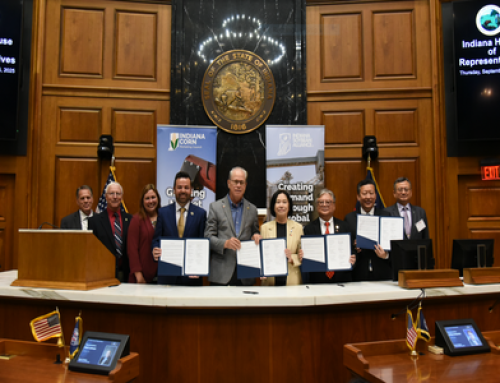 |
|---|
by Dan Crummett, Precision Farming Dealer magazine
Brookfield, WI — While regulations, or lack thereof, governing the use of crop protection chemicals applied by unmanned aerial vehicles (UAVs) vary widely across the globe, U.S. growers and applicators are currently operating under a grace period of oversight. That isn’t likely to last long.
Neill Newton, Syngenta’s Global Drone Applications Manager, says major chemical companies are funding studies to better standardize the labeling of products that can be applied to crops by drones in hopes of reducing future red tape in product labeling for UAV use.
“The EPA has essentially told us that currently, as long as a product has an aerial label, it can be applied from a drone as long as various state regulations apply,” Newton says. “That assumes the operator has the proper licensing and certifications.
“EPA also told us that’s not going to be the case forever. They will want to assess the risks from these applications in the future, just as they assess risks from ground rigs or piloted aircraft.”
To address future regulations from EPA, and similar organizations around the world, Newton says 9 major crop protection chemical companies pooled money initially in 2021 to fund research and generate data under the Unmanned Aerial Pesticide Applications System Task Force (UAPASTF). The thrust of the project is to study drift data, human operator exposure data, and other research that agencies such as EPA, Canada’s Pest Management Regulatory Agency (PMRA) and regulators in Europe and Australia will be requesting.
Current membership in the organization includes BASF Corp., Bayer CropScience LP, Corteva Agriscience, FMC Corp., Gowan Co., NuFarm Americas, Syngenta Crop Protection and Valent U.S.A.
As part of the effort, UAPASTF also developed a ‘best management practices’ (BMP) document concerning UAV-based application of pesticides and sought input from global stakeholders including UAV application and manufacturing companies, academic and government experts, and regulatory agencies.
“In the future, when a company approaches EPA to ask what’s needed to get a registration for its new product, EPA will say, ‘We need some data,'” Newton explains. “We don’t want to generate data for every new product developed, so our goal with the task force is to generate reference data from which we can build a mechanistic model — similar to AgDRIFT Plus — to simplify the process.”
AgDRIFT Plus is the current version of the AGricultural DISPersal (AGDISP®) model developed by the U.S. Forest Service, created by the EPA, the U.S. Department of Agriculture’s Forest Service, and the Spray Drift Task Force. It has the capability to assess a variety of spray drift conditions from agricultural applications and off-site deposition of liquid formulation of pesticides. The model can be used in estimating downwind deposition of spray drift from aerial, ground boom and orchard/vineyard airblast applications.
To read the entire article click here.



